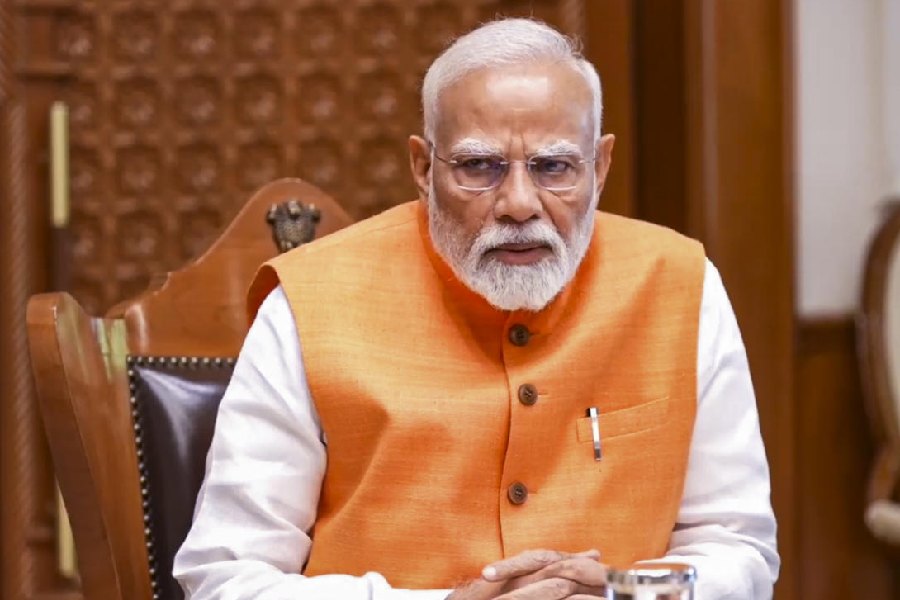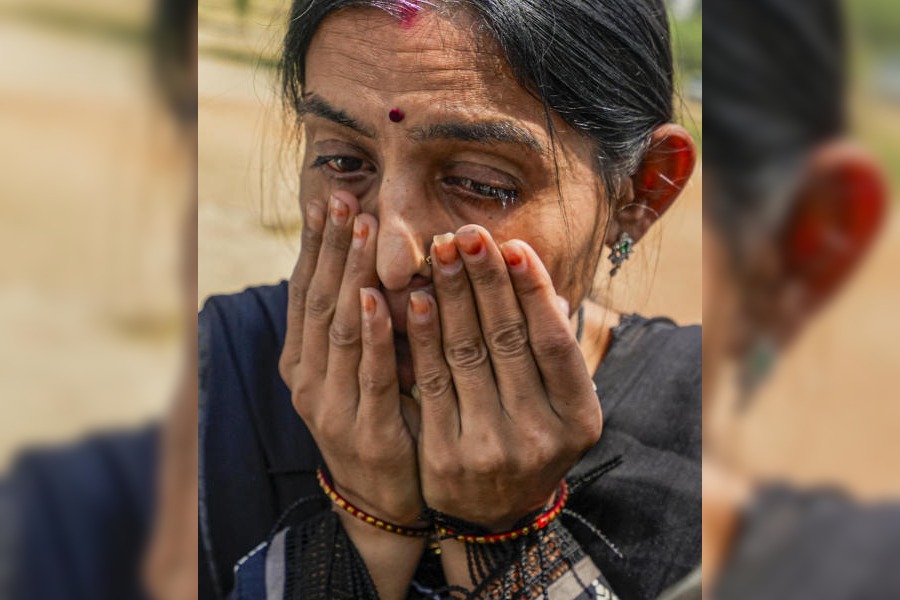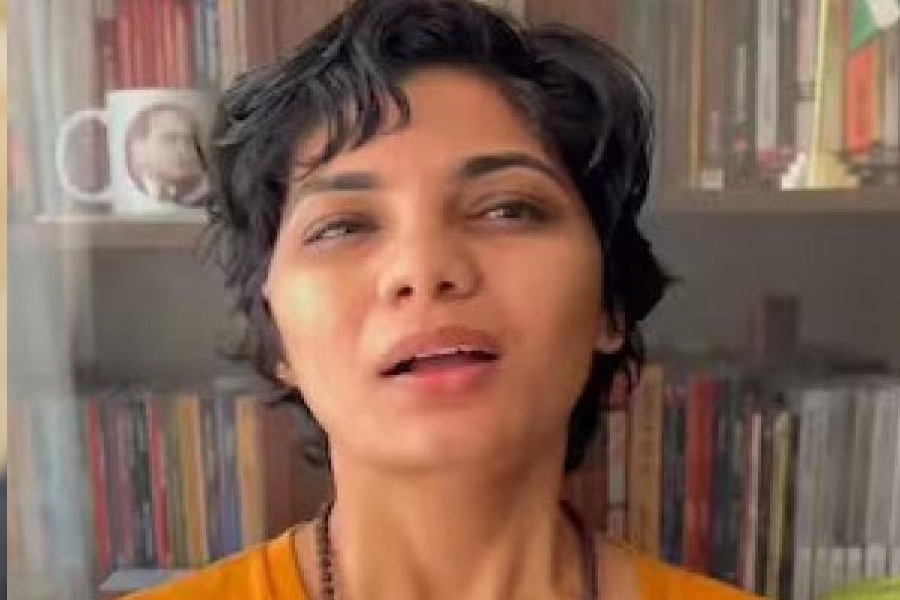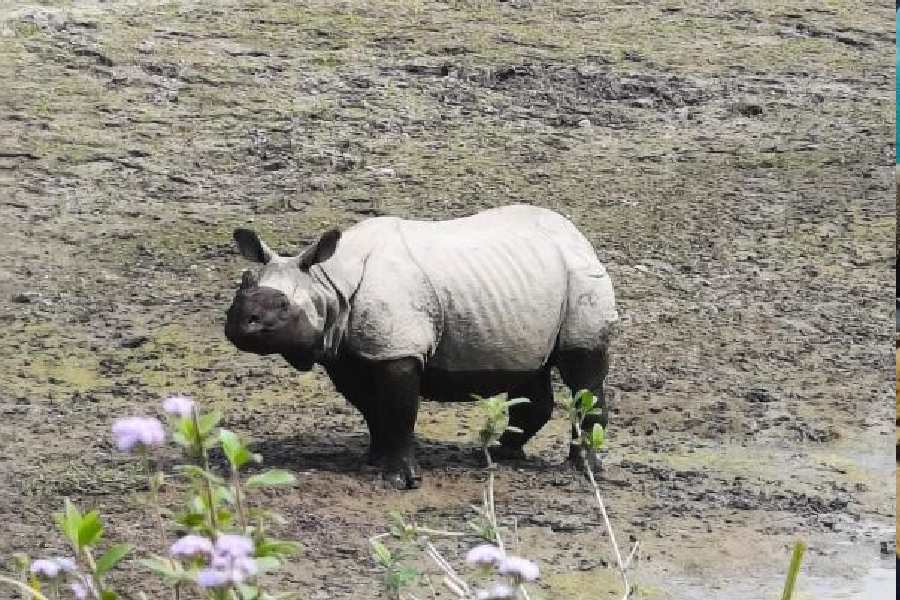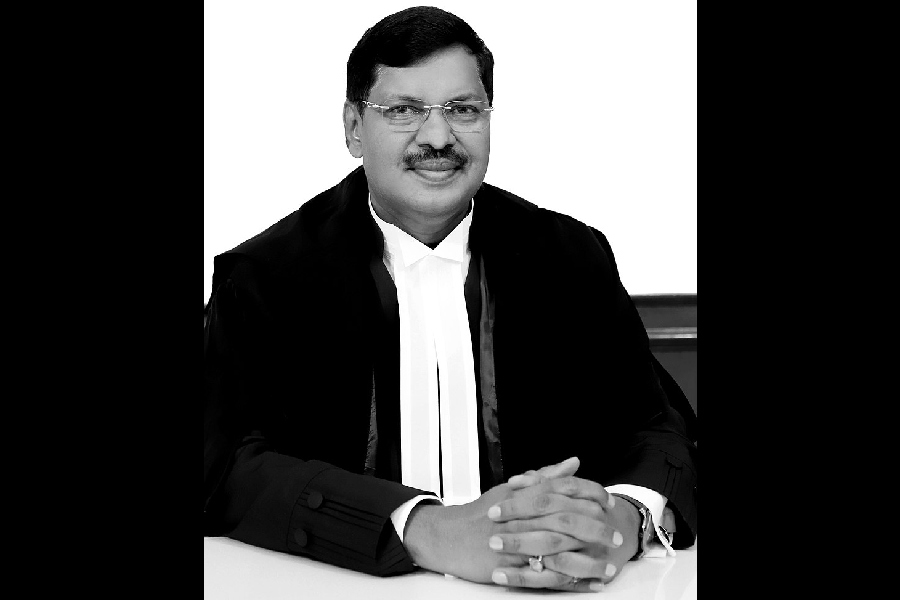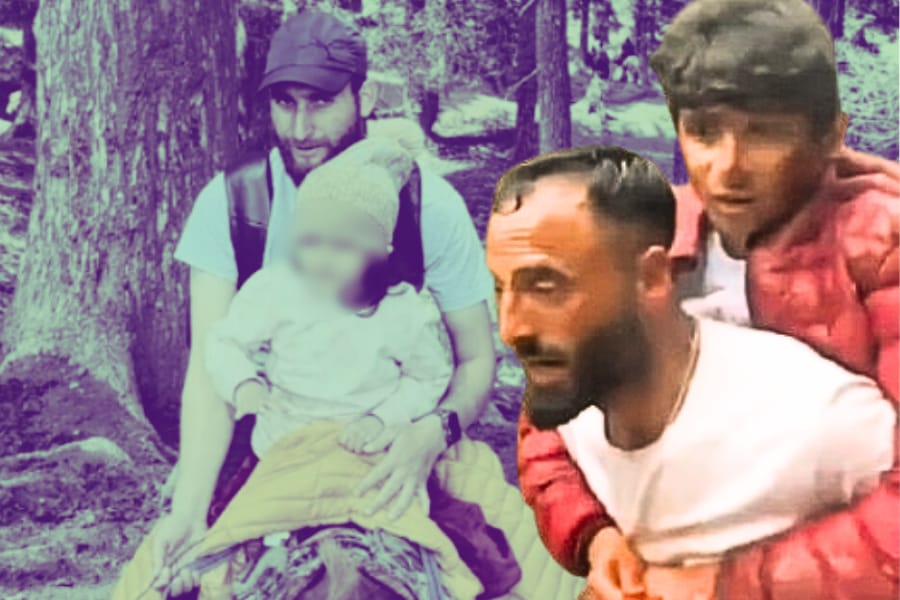 |
| Girls perform a traditional dance during the festival. Telegraph picture |
Itanagar, Sept. 1: A sea of colours engulfed Itanagar today as the Adi tribes of Arunachal Pradesh gathered to celebrate the annual harvest festival of solung.
In a fast-changing world marked with infrastructure development where traditional bamboo stilt houses are giving way to concrete structures and where the once-dominant animist belief on the power of donyi and polo (sun and moon) face the threat of both Christian and Hindu ways of life, tribes in Arunachal still hang on to centuries-old faiths by a thin thread. Nowhere is this more visible than in the annual harvest festivals of the 26 major and numerous sub-tribes that dot this hilly state’s landscape.
Celebrated across the length and breadth of the Siang river by members of the Adi community, the festival of Solung, which was once celebrated to mark the beginning of harvest, has now become both a tool and symbol to bring together an entire community.
The festival begins with the early morning sacrifice of mithuns and pigs on the first day — ardo-baado. As the celebrations progress, on the third day, women take to the fields to make offerings to Kiine-Naane (the deity of crops and prosperity). By the fifth day, the ekop or takto, small bows and arrows are fastened atop doors to keep evil spirits at bay. These rituals are followed by the performance of the solung ponung (dance) to the song sung by the miri (rhapsodist).
Several dances follow the five-day celebrations such as the nunu pi:pi, which depicts the triaSls and joys of motherhood. On the same platform are performances by young girls, who dance to the tune of Dite Mopa sung and recorded by Usha Uthup.
Symbolic as these events may seem, they still hold much resonance with the community. As the state secretary for land management Bilatee Pertin, an Adi himself, put it, “The festival is the epicentre of the Adi way of life.”
Author and Padma Shri Mamang Dai said she is “always impressed by the dynamics of different societies”. Dai also felt lucky that unlike tribal people in other parts of the country, the Adis “were never displaced as a people”.
However, she warned that such festivities must not merely become symbolic and that “we must bring back meaning and context to our celebrations”.
Member secretary of the state civil services Jathi Pulu took a more melancholy view of the present scenario. A prominent figure within the Idu-Mishmi community who reside alongside the Adis in the Dibang belt, said he is “saddened that with the advent of time and education, communities in Arunachal have grown apart”.
However, Dai and Pulu see hope in such celebrations.
Perhaps nowhere is hope for a better future more visible than the day’s final formal event — a tug-of-war between the men and women gathered at the Solung-Mopin ground.
In a show of strength and unity, the women pull their male counterparts to the ground in less than a minute. Nari shakti, the announcer shouts.


